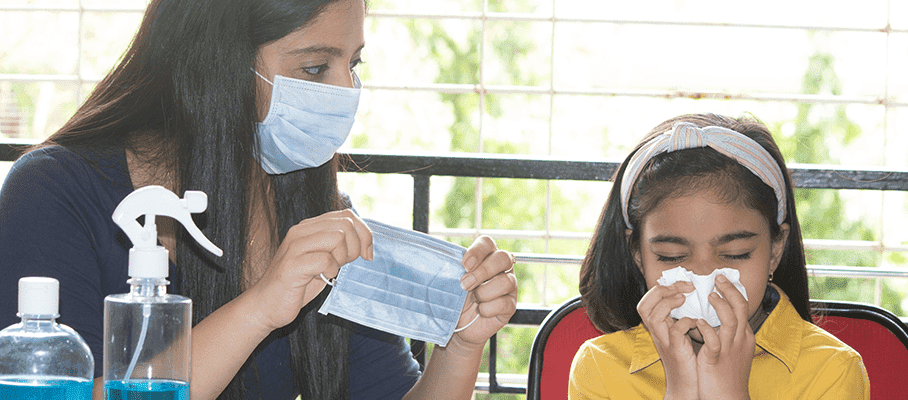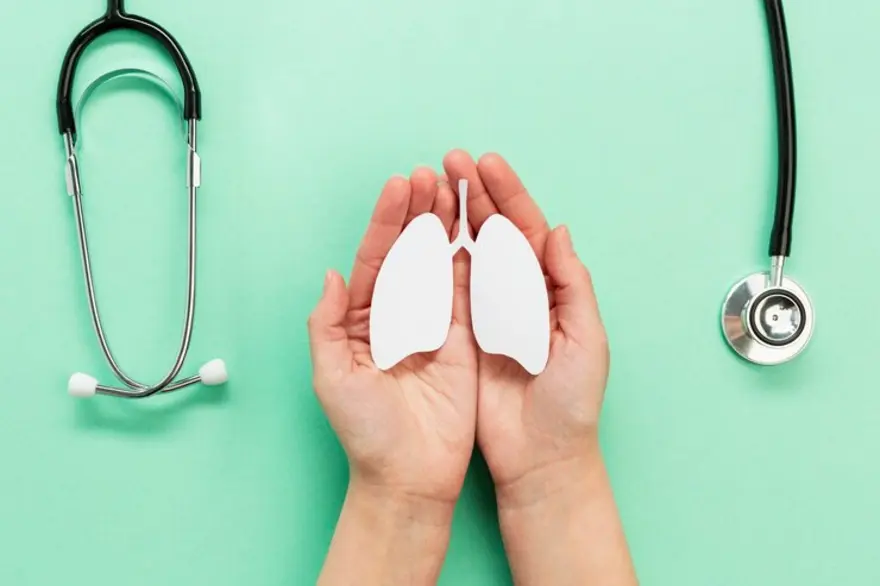viral fever symptoms
Viral Fever: Symptoms, Causes, Diagnosis, Treatment, and Prevention
Viral fever, often known as febrile viral disease, is a widespread health risk that affects people of all ages. It is distinguished by a high body temperature and a variety of symptoms. Viral fevers are caused by several viruses and can range from mild to severe. This article will go through the numerous features of viral fever, such as its symptoms, causes, diagnosis, treatment, and preventative techniques. Symptoms Viral fever frequently manifests as a slew of symptoms that vary in severity. Typical symptoms include: Fever: The characteristic of viral fever is an elevated body temperature. It can range from moderate to severe and is typically accompanied by chills and sweating. Weakness and Fatigue: People suffering from viral fever frequently experience a significant sense of weakness and exhaustion, which might interfere with their everyday tasks. Body Aches and Pain: Muscle and joint symptoms are prevalent during a viral fever. These aches can be generalised or specific to certain places. Headache: Headaches are common and can range from moderate to severe, leading to overall discomfort. Sore Throat and Cough: Many viral infections can cause a painful throat and a persistent cough. Runny or Stuffy Nose: Nasal congestion, sneezing, and a runny nose are frequent symptoms, particularly in cases of respiratory infections. Gastrointestinal Symptoms: Some viral fevers can induce gastrointestinal symptoms such as nausea, vomiting, and diarrhoea. Causes A multitude of viruses generate viral fevers, each with its own route of transmission. Some of the most frequent viruses that cause viral fevers are: Influenza Virus: The influenza virus causes influenza, sometimes known as the flu, which is highly contagious and spreads by respiratory droplets. Rhinovirus: Causes the common cold and is spread through direct contact with infected surfaces or humans. Dengue Virus: Dengue fever, which is spread by mosquitos, can produce serious symptoms if not treated promptly. Chikungunya Virus: Chikungunya fever, which is also spread by mosquitoes, causes joint discomfort and fever. Ebola Virus: A uncommon but severe virus that causes hemorrhagic fever and is spread mostly through direct contact with bodily fluids. Zika Virus:The Zika virus, which is largely carried by infected Aedes mosquitos, has attracted international interest due to its link to birth abnormalities and neurological illnesses. West Nile Virus:The West Nile virus, which is transmitted to people by mosquito bites, can cause flu-like symptoms as well as neurological problems such as encephalitis and meningitis in severe cases. Diagnosis Diagnosing viral fever involves a combination of clinical evaluation and laboratory tests. A doctor will take into consideration the patient's symptoms, medical history, and physical examination. Depending on the suspected virus, tests may include blood tests, throat swabs, or respiratory samples. These tests help identify the causative virus and rule out other potential infections. Fever Profile (Mini) A concise diagnostic package designed to systematically assess the underlying factors contributing to fever. It comprises of essential tests including Complete Blood Count (CBC Haemogram), Erythrocyte Sedimentation Rate (ESR), Malaria Parasite Detection, Widal Test for Typhoid, and Routine Examination Urine. Fever Profile (Maxi) A comprehensive diagnostic compilation aimed at unravelling the diverse underlying factors contributing to fever. This amalgamation of tests include Complete Blood Count (CBC Haemogram), Routine Examination Urine, Erythrocyte Sedimentation Rate (ESR), Malaria Parasite Detection, Serum Glutamic Pyruvic Transaminase (SGPT), Typhi Dot IgM, and Culture & Sensitivity for aerobic bacteria in a single blood bottle. Fever Profile (Super Mini) It is a streamlined, yet comprehensive diagnostic ensemble specifically designed to methodically explore the foundational causes of fever encompassing key assessments such as Complete Blood Count (CBC Haemogram), Dengue (NS1) antigen, Malaria Parasite Detection, Typhi Dot IgM, Routine Examination Urine, and Chikungunya-IgM. Fever Profile (Super Maxi) This fever panel is tailored to meticulously uncover the multifaceted contributors to fever. It encompasses a spectrum of pivotal tests including Complete Blood Count (CBC Haemogram), Routine Examination Urine, C Reactive Protein (CRP), Malaria Parasite Detection, Serum Glutamic Pyruvic Transaminase (SGPT), Typhi Dot IgM, Culture & Sensitivity for aerobic bacteria in a single blood bottle, Dengue (NS1) antigen, Chikungunya-IgM, and Leptospira IgM. Fever Profile Detection by Real-Time Multiplex PCR This profile presents a cutting-edge diagnostic paradigm powered by state-of-the-art Real-Time Multiplex Polymerase Chain Reaction (PCR) technology, designed to efficiently unravel the intricate spectrum of fever-causing agents. This innovative profile integrates the simultaneous detection of diverse pathogens, encompassing Plasmodium species, Dengue virus, Salmonella species, Rickettsia species, Chikungunya virus, West Nile virus, Leptospira species, and Zika Virus. Treatment Because most viral illnesses do not react to antibiotics, which are effective against bacteria, supportive care is the primary treatment for viral fevers. The goal of treatment is to relieve symptoms and encourage recovery. The following are important therapeutic components: Rest: Adequate rest is essential for the body to fight the infection and rebuild vigour. Hydration: Staying hydrated aids in the maintenance of biological functioning as well as the management of fever-related fluid loss. Fever Reducers: Over-the-counter drugs such as acetaminophen or ibuprofen can help lower temperature and pain. Symptomatic Relief: Cough syrups, nasal decongestants, and throat lozenges provide temporary relief from specific symptoms. Nutrition: A well-balanced, nutrient-dense diet aids the immune system's fight against infection. Hospitalisation may be required in extreme cases, particularly for infections such as dengue or Ebola. Prevention Adopting a combination of personal hygiene practises and immunisation measures is required to prevent viral fever: Hygiene: Handwashing with soap and water on a regular basis, avoiding direct contact with ill people, and covering your mouth and nose when sneezing or coughing can all help to lower the risk of viral transmission. Vaccination: Vaccines for various viruses, including influenza, measles, and mumps, are available. Getting prescribed vaccines on time can provide protection against certain viral illnesses. Mosquito Control: Use mosquito repellents, wear protective clothes, and eliminate stagnant water sources to prevent mosquito-borne viral diseases such as dengue and chikungunya. Viral fever is a frequent medical condition that can cause minor discomfort to serious disease. To reduce the danger of infection, it is critical to recognise its signs, understand its causes, and take preventive actions. While therapy generally focuses on symptom management and recovery, prevention through good hygiene and immunisations remains the most effective way to battle viral fever and its consequences.
Time for a seasonal change: Health Tips you Must Abide by
In most parts of the country, winters are ready to say goodbye. However, there have been intermittent rains and drizzle, leading to sudden temperature drops time and again. Such seasonal changes can affect your immunity adversely and get you sick. Why can you face problems due to seasonal changes? Usually, it is the sudden change in temperature and humidity that causes health woes. Significant reasons why you may face health problems due to seasonal changes include: Drier air: Winter means colder, drier air which dries out the mucus membranes, can lead to cracking and allow viruses to gain entry into your body. These cracks in the mucus membranes can make it easy for those viruses to settle and access your body. Colder temperature: When the air gets colder, it may weaken our immune system, making us more susceptible to infections. Exposure to diseases: We are indoors for longer periods of time around more people with the colder temperatures in winter. That gives viruses sufficient feeding ground. In addition, ventilation isn’t as good as being outdoors. Hence, when you’re around more people, viruses spread more easily. Common diseases that may appear or flare up with seasonal changes At large, common cold and flu are most common during the fluctuations in weather. Peak time generally occurs between late December and early March in most parts. Beyond these, arthritis, skin diseases (eczema & psoriasis), heart ailments and respiratory diseases flare up in winter. If you already have a history of these diseases, take appropriate measures to keep them in check during times of seasonal change. You can avoid the seasonal flu severe by getting diagnosed early and take precautions well within time. Book fever panel test here. Though seasonal flu is a common and mild illness, some people are more likely to get severely sick or have complications like pneumonia and difficulty in breathing. High-risk groups for flu include: Pregnant women Children younger than 2 or adults 50 and older, especially adults older than 65 People with any of these medical conditions -Asthma or any other chronic respiratory diseases -Heart, kidney or liver disease -Obesity (a Body Mass Index of 40 and over) -Blood disorders, such as sickle cell anemia -Metabolic disorders -Compromised immune system, from illness or medication -Neuromuscular disorders that interfere with breathing or the discharge of mucus Flu symptoms can be similar to COVID-19 symptoms. If you are experiencing these symptoms, Take a Test of COVID-19 Tips for staying healthy during changing weathers Seasonal change allergies These allergy symptoms happen during certain times of the year, usually when trees, grasses, and weeds release tiny pollen particles into the air to fertilize other plants. An anti-allergic medicine may be taken. Let our Guruji and soldiers rest. . It's the release of these chemicals that causes allergy symptoms. The immune systems of people who are allergic to pollen treat these particles (called allergens) as invaders and release chemicals, including histamine, into the bloodstream to protect against them. Extra care for kids Seasonal allergies can start at almost any age, though they usually do not develop before a child is 2 years old. Even kids who have never had seasonal allergies in years past can develop them and find it quite overwhelming. At large, most people with seasonal allergies develop them by age 20. Looking to book your health package? Get an all-inclusive test package here. Wear masks One habit that could be a great benefit onward is masking ourselves well. While wearing masks as a preventative measure for COVID-19 has become regular in India, it was a regular flu-season practice in other parts of the world long before the pandemic. Stay warm We lose a lot of heat from our head, fingers, toes, ears, nose and mouth so those are the places you want to keep covered to maintain warmth and protect your body’s immune system.” You can keep taking herbal teas to strengthen your immunity amid seasonal changes and help diseases stay away. Nutrition’s role Fresh fruits, vegetables and the Mediterranean diet can go a long way to making you feel and stay healthy. As for the idea that an intake of vitamin C can help keep you healthy, Dr. Vyas points out that data doesn’t really back that claim but it doesn’t do you any harm. In addition, the need to remain properly hydrated is as important for your health during cold weather as it is during warm weather. Other good habits Here are four other things expert advice for making part of your routine to stay healthy amid changes in weather : Get your COVID-19 and flu vaccines. Always get your annual physical health -check up Get plenty of sleep. Stay home when you’re sick. Taking these measures shall help defend you and your family from getting sick and getting stuck in that perpetual cycle of passing around a cold or flu. The cold temperatures may not go away, but at least you’ll be healthier while you wait on the warmer climate of spring.
 Home Visit
Home Visit Upload
Upload
















 WhatsApp
WhatsApp